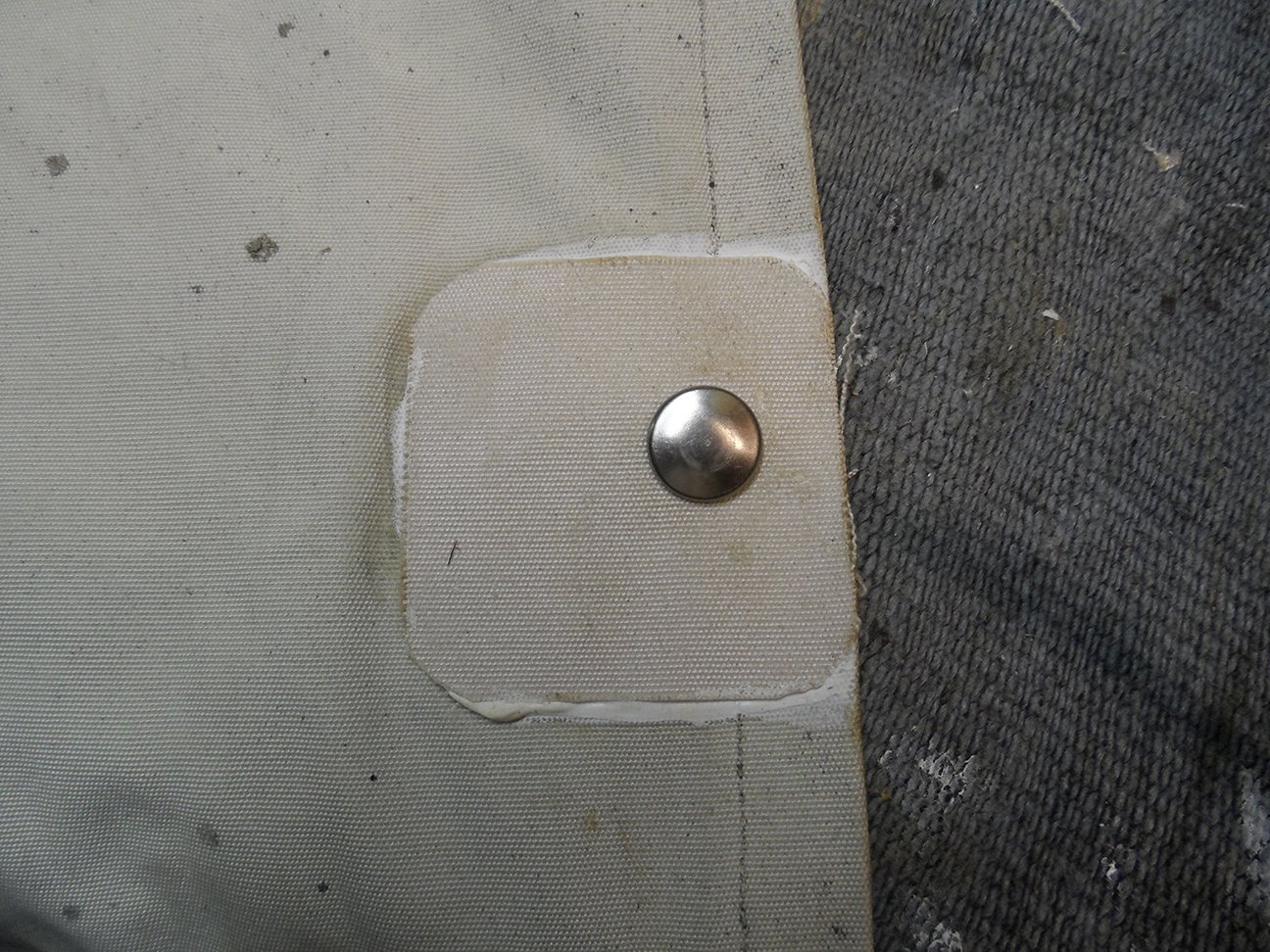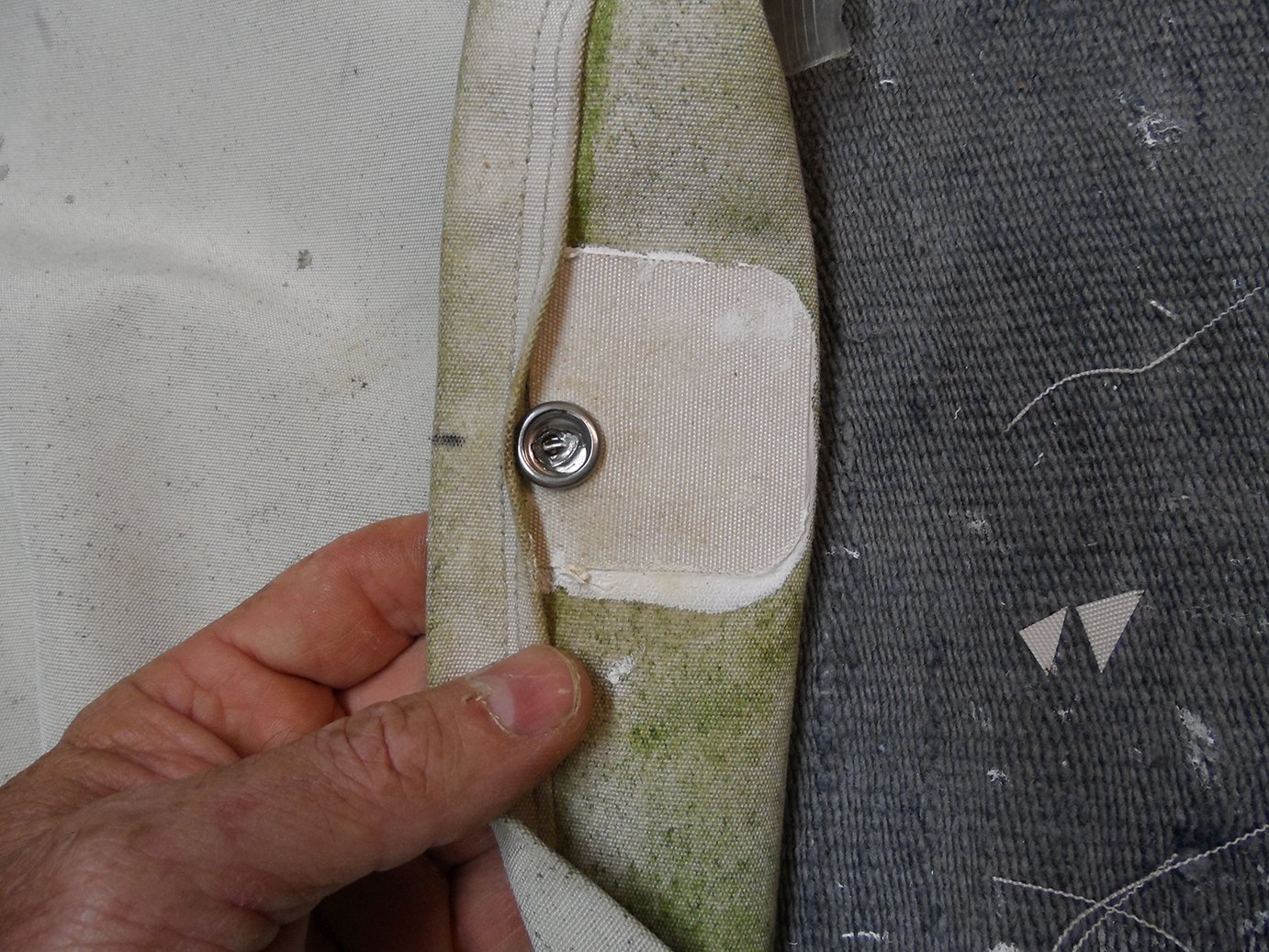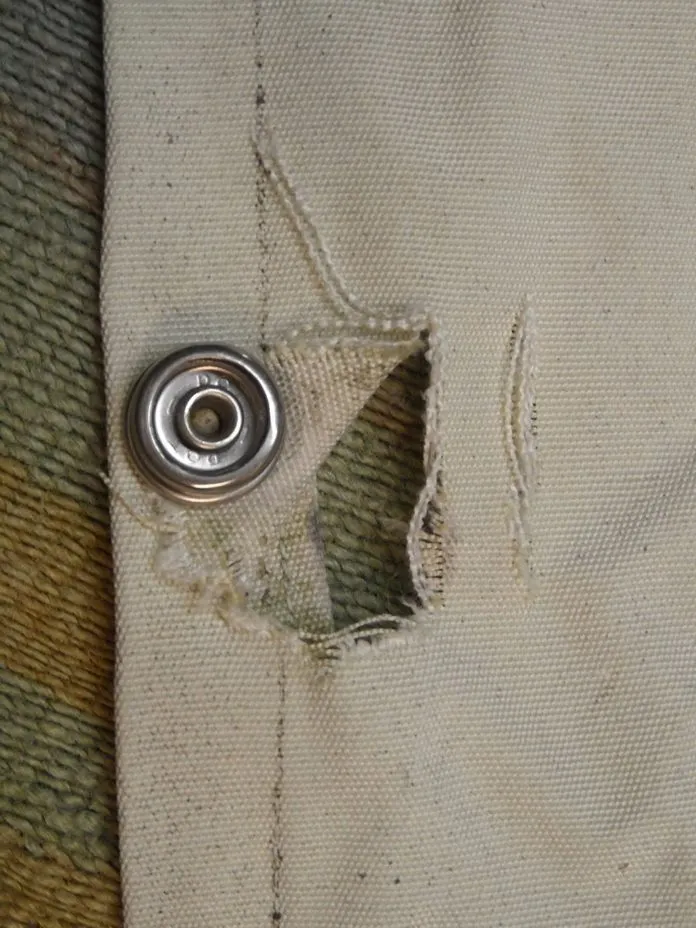
photo by Drew Frey
Sooner or later, chafe, UV rays, and sharp edges take their toll on our boats canvas. A misplaced screw or simple friction will eat holes in a dodger. A seam gives up, a line rubs through the fabric, and a few snaps come loose. A sewn repair is the gold standard, but perhaps it isn’t worth taking the dodger off to get at it, the geometry is difficult for sewing, or perhaps the older canvas simply doesn’t justify all that work for such a small area.
Older fabric may be too sun-rotted to allow the weak spot another row of stitches will create, and the stitching may leak. Fortunately, there are adhesive and tape solutions that get around some of these problems.
In the upcoming September 2017 issue of Practical Sailor, tester Drew Frye, who also blogs at his website Sail Delmarva, compares a variety of tapes, glues, and adhesives for making these types of repairs. One of the most common repairs sailors are bound to encounter are tears at or near a snap or fastener.

photo by Drew Frye

photo by Drew Frye
Snaps are the first failure point on many covers and dodgers. Often the stress cause by repeated shrinking and stretching during wet/dry cycles works them loose. Complicating matters, they are located in corners and along hems, complicating repairs. Taking the cover to a sailmaker is expensive, to say nothing of the labor of taking it off and hoping you can stretch it back into place. Fortunately, a glued repair can be stronger and simpler than a sewn repair, just the ticket for aging canvas.
Remove the old snap, disturbing as little cloth as possible.
Bring the edges together on the reverse side with masking tape.
Cut a 2-inch square patch (round the corners) and slather it up with a 1/16-inch coating of polyurethane adhesive sealant (3M 5200 works well, and other options are discussed in the upcoming September test report). Rub into place, working the excess sealant towards the edge. Mask the edge of the patch site if you want a neat job.
Patch the reverse side if the cloth damage is severe.
Allow to cure. Varies with the products, but for polyurethane it is typically 3-5 days in warm humid weather, 10 days in cool, dry weather. We’ve had good luck with 3M 5200, but other polyurethane adhesive sealants did well in our test. And we also had good results with faster-drying Dr. Sails adhesive from Sailing Tech. See the full report for other options.
Punch and install hardware as usual. Relocate the fittings if the failure was due to the canvas shrinking.
This is one time where the increased stiffness helps, better distributing the force over all of the fabric layers. Weve never had a repeat failure. We have also used this method to install new grommets in covers and cockpit line bags. We simply lay on a second layer of cloth and bond. The result is just as strong as three layers of sewn cloth and more dimensionally stable.
The same process can be used to repair other types of canvas fasteners.
































